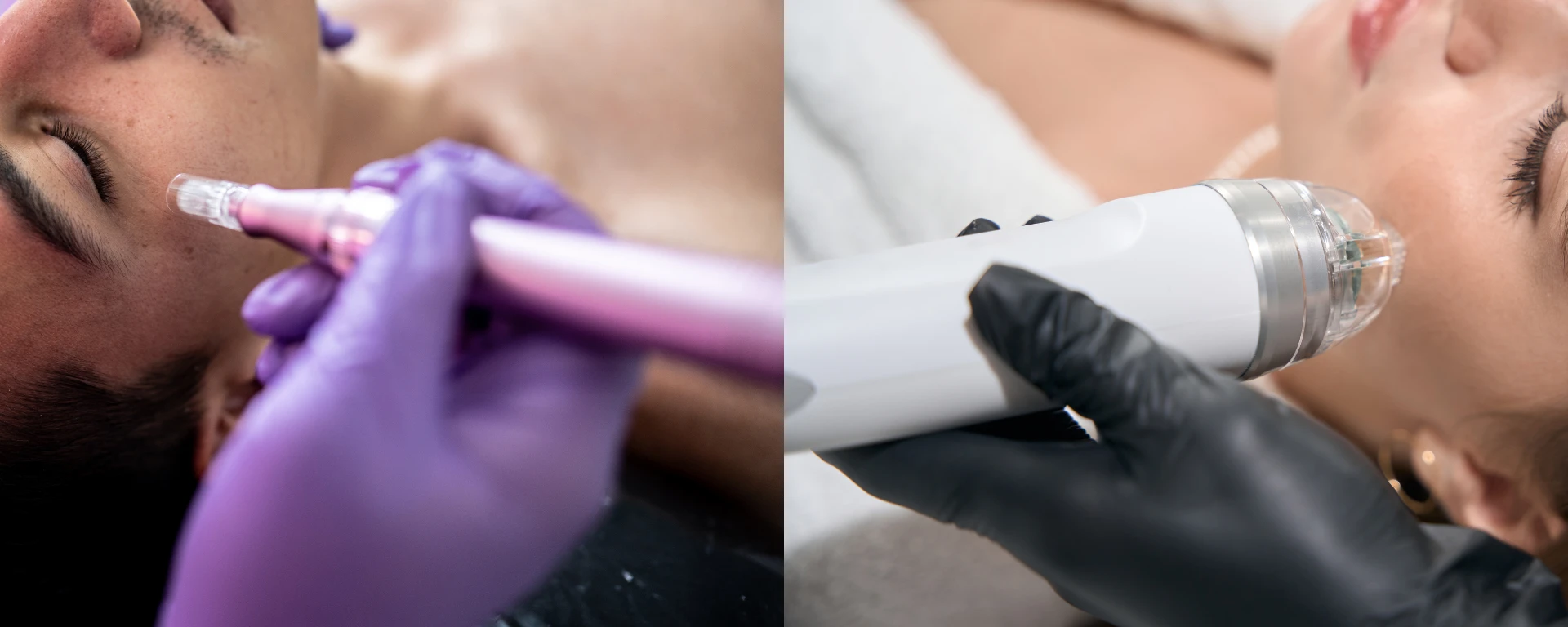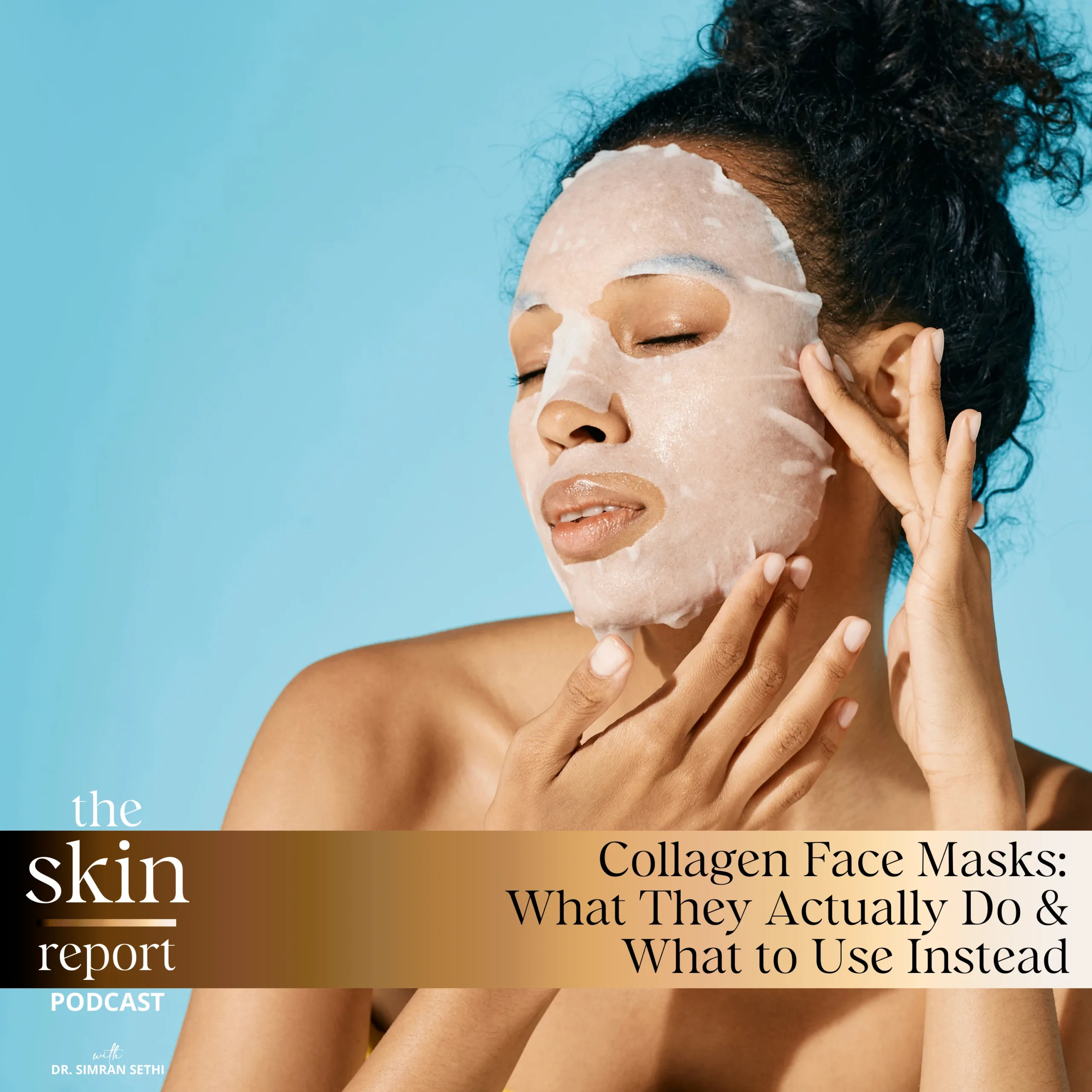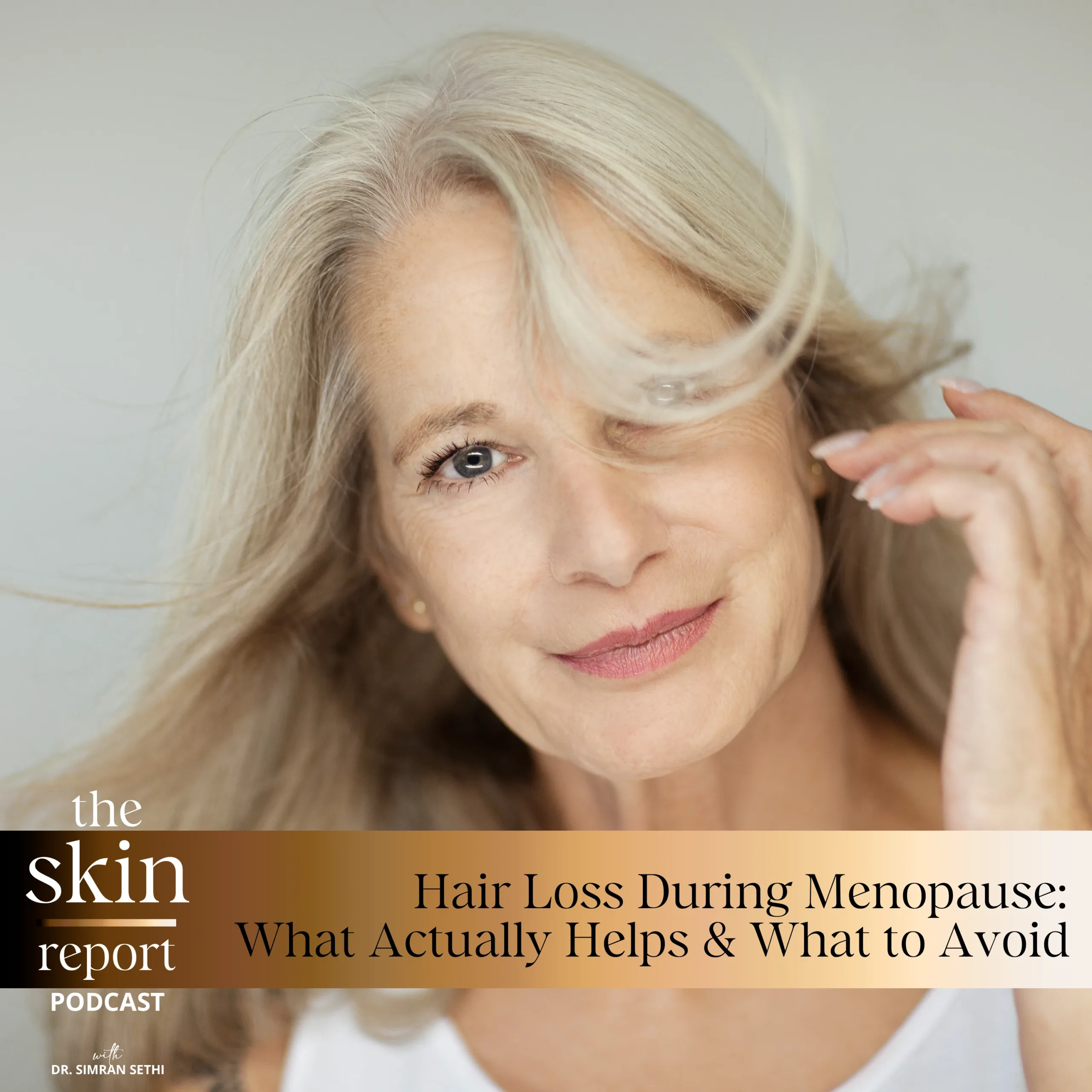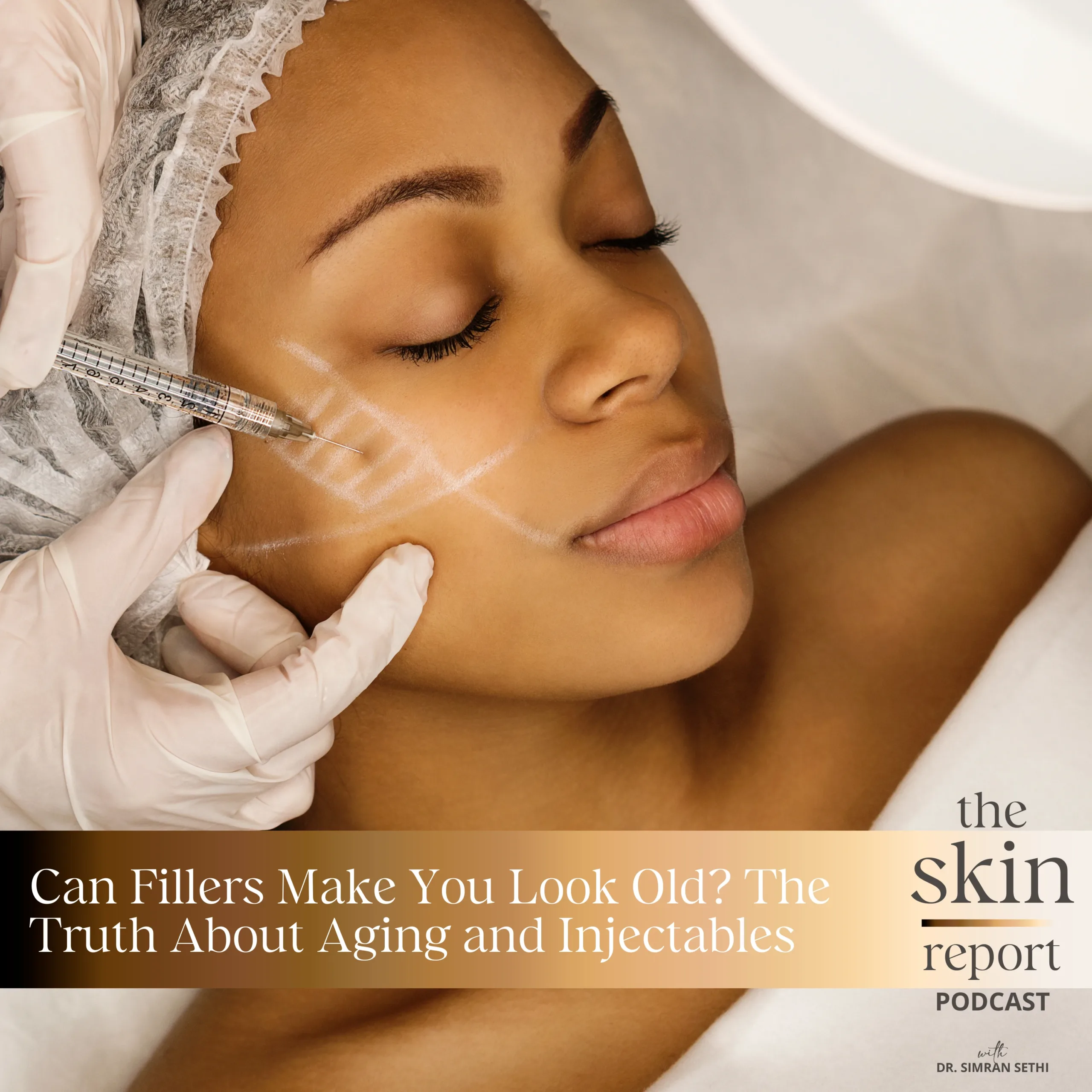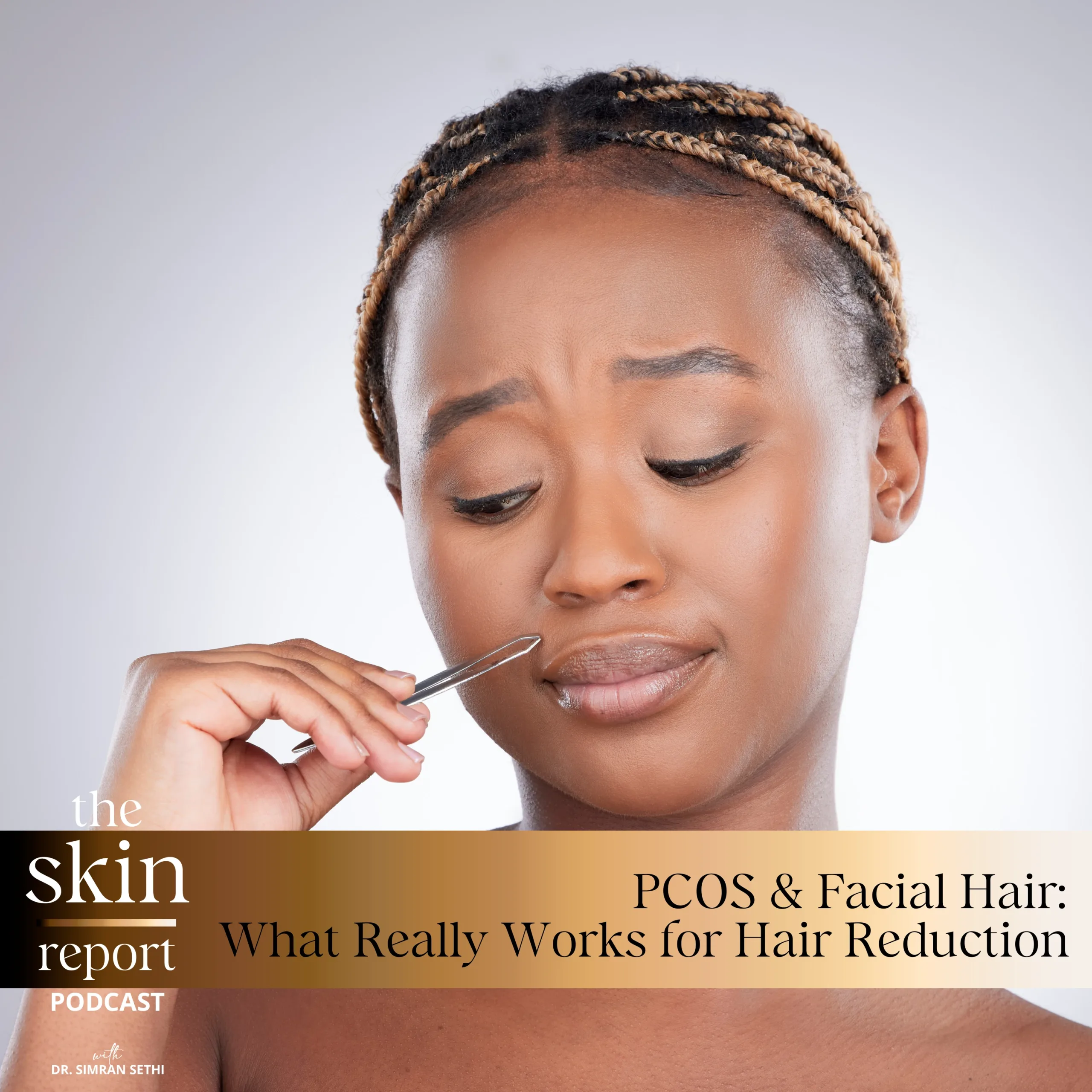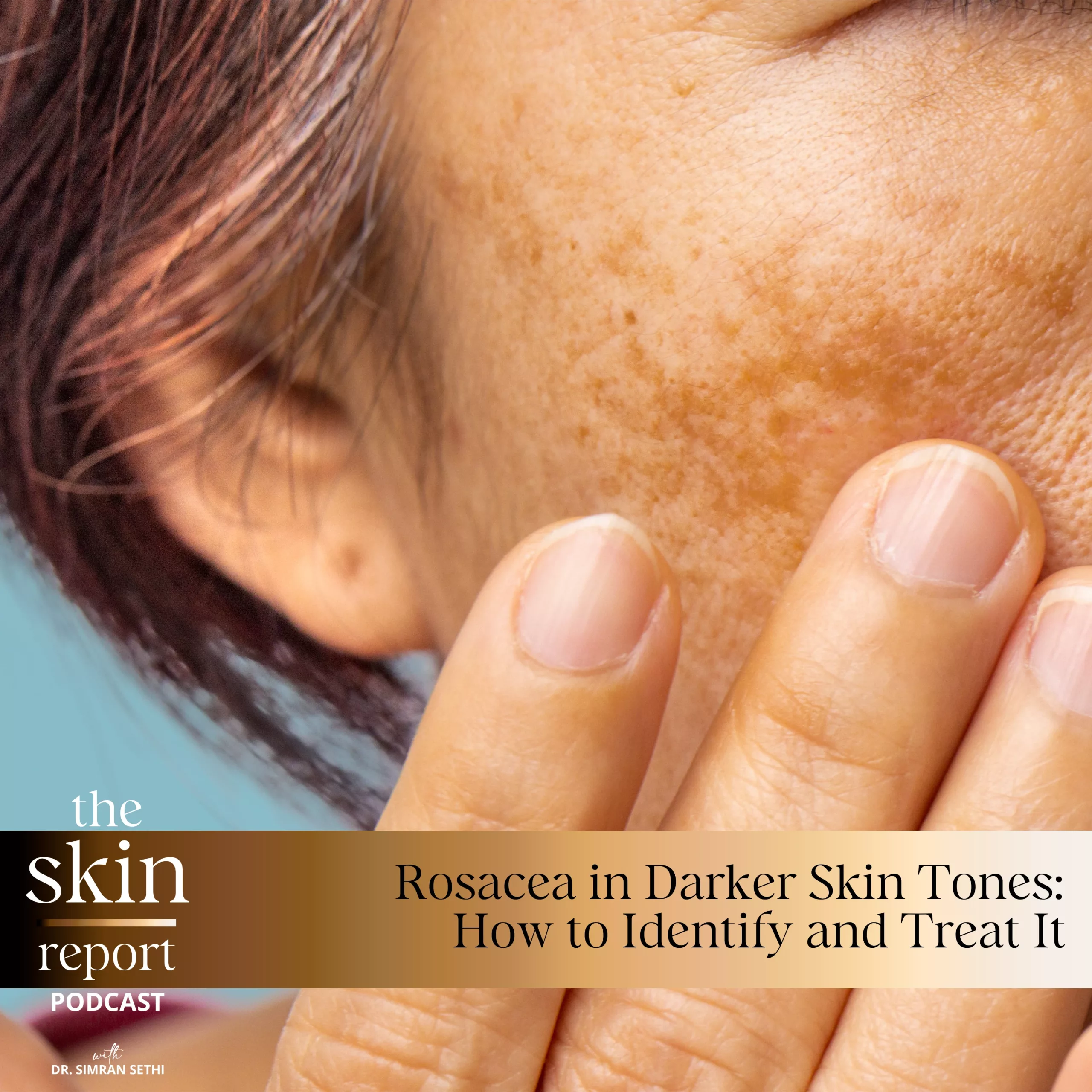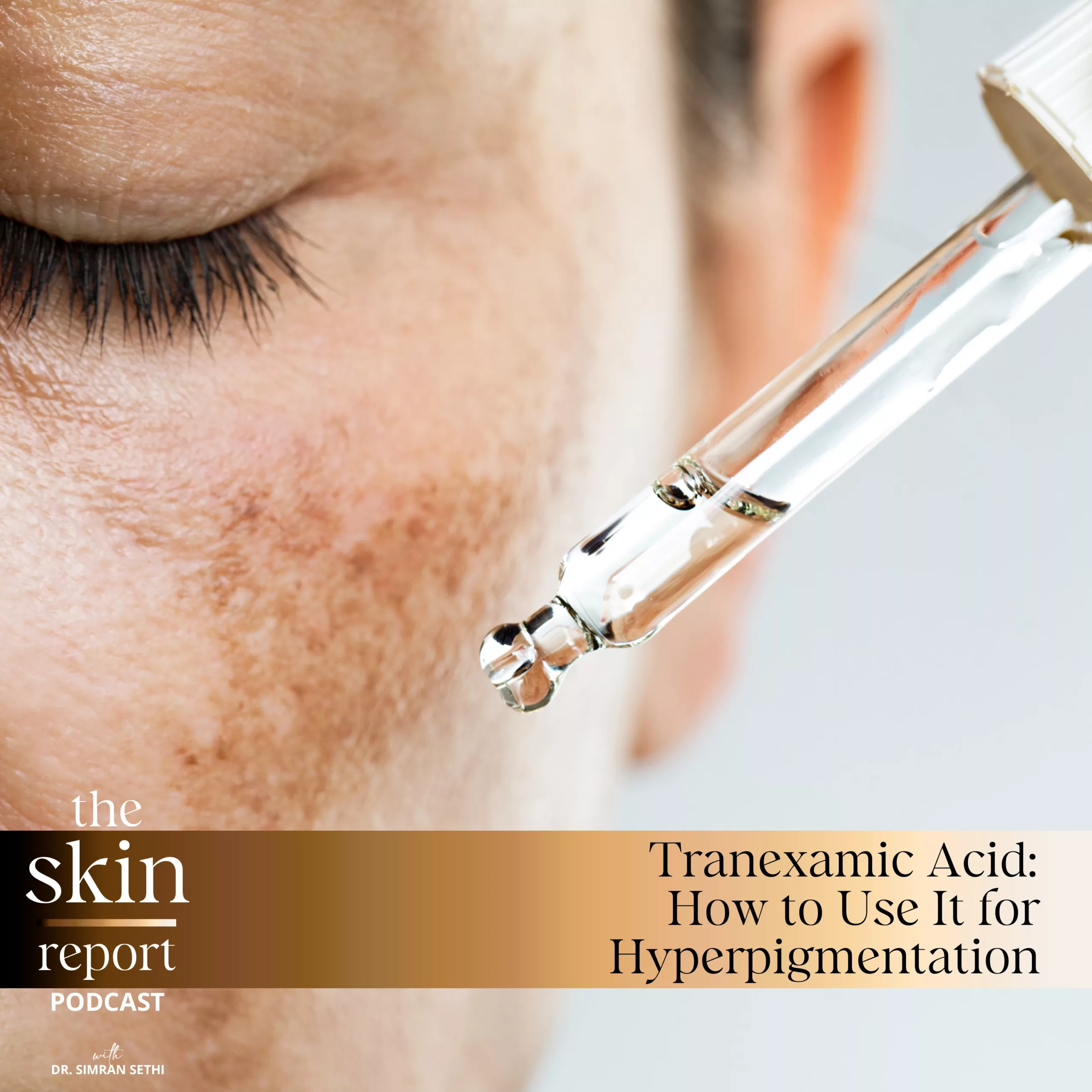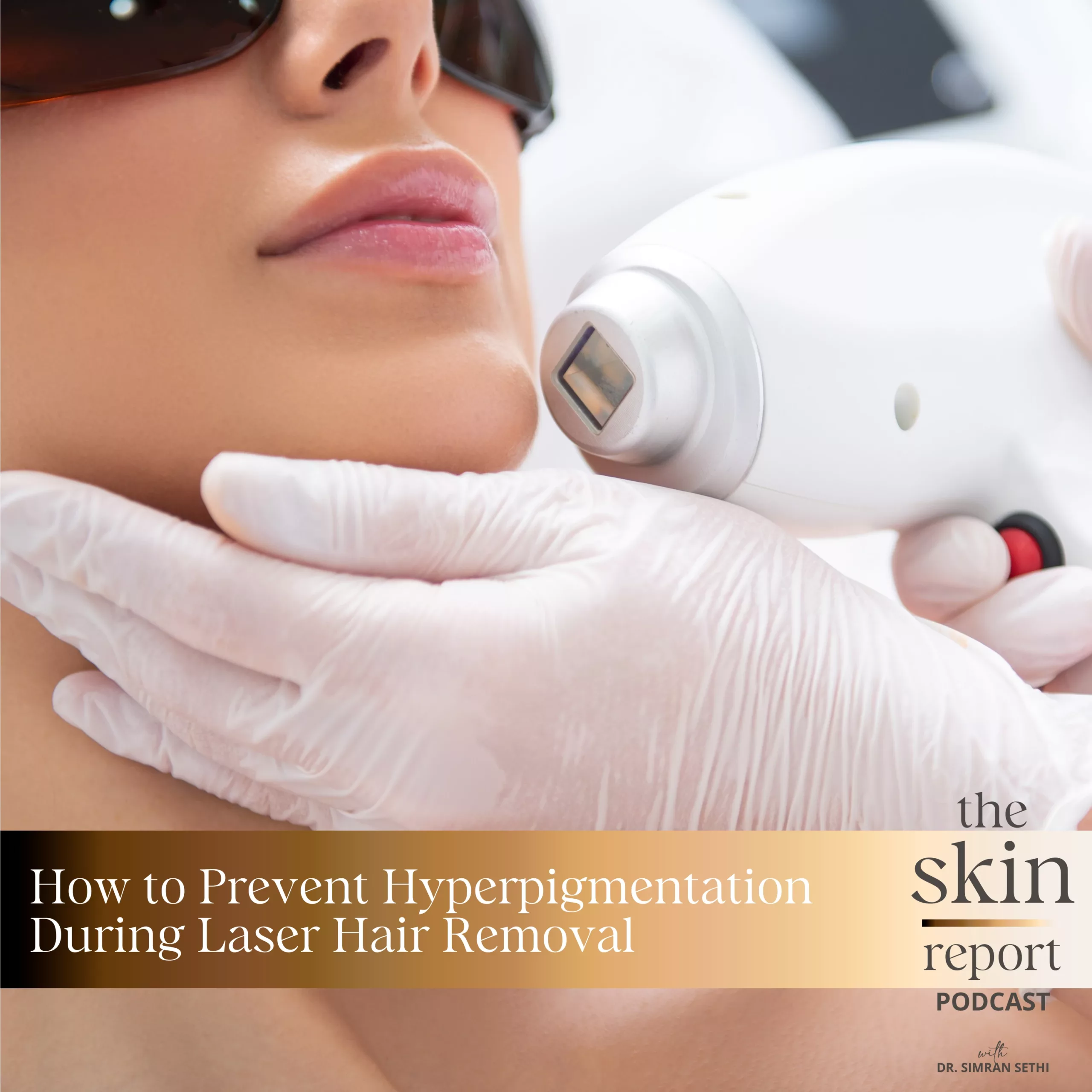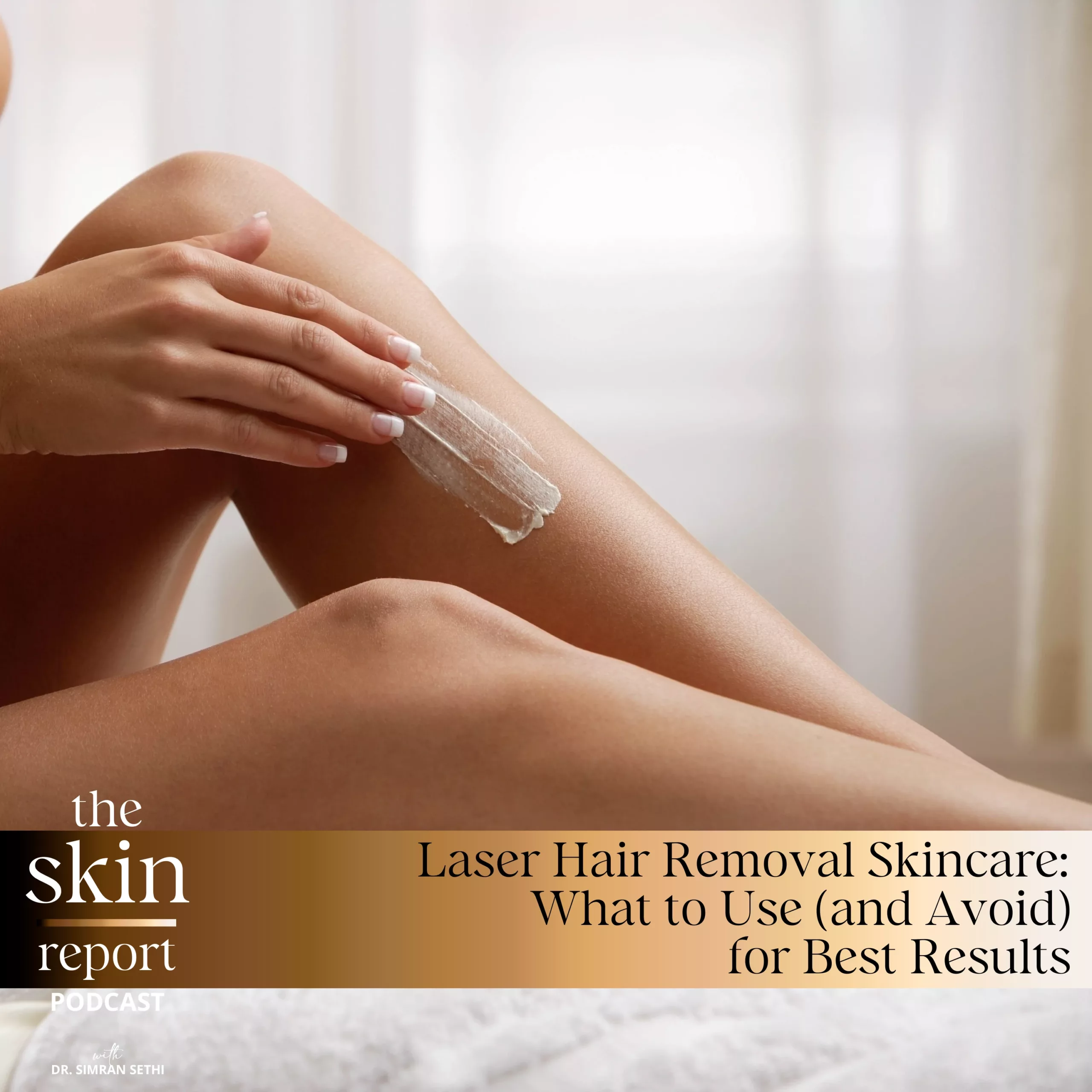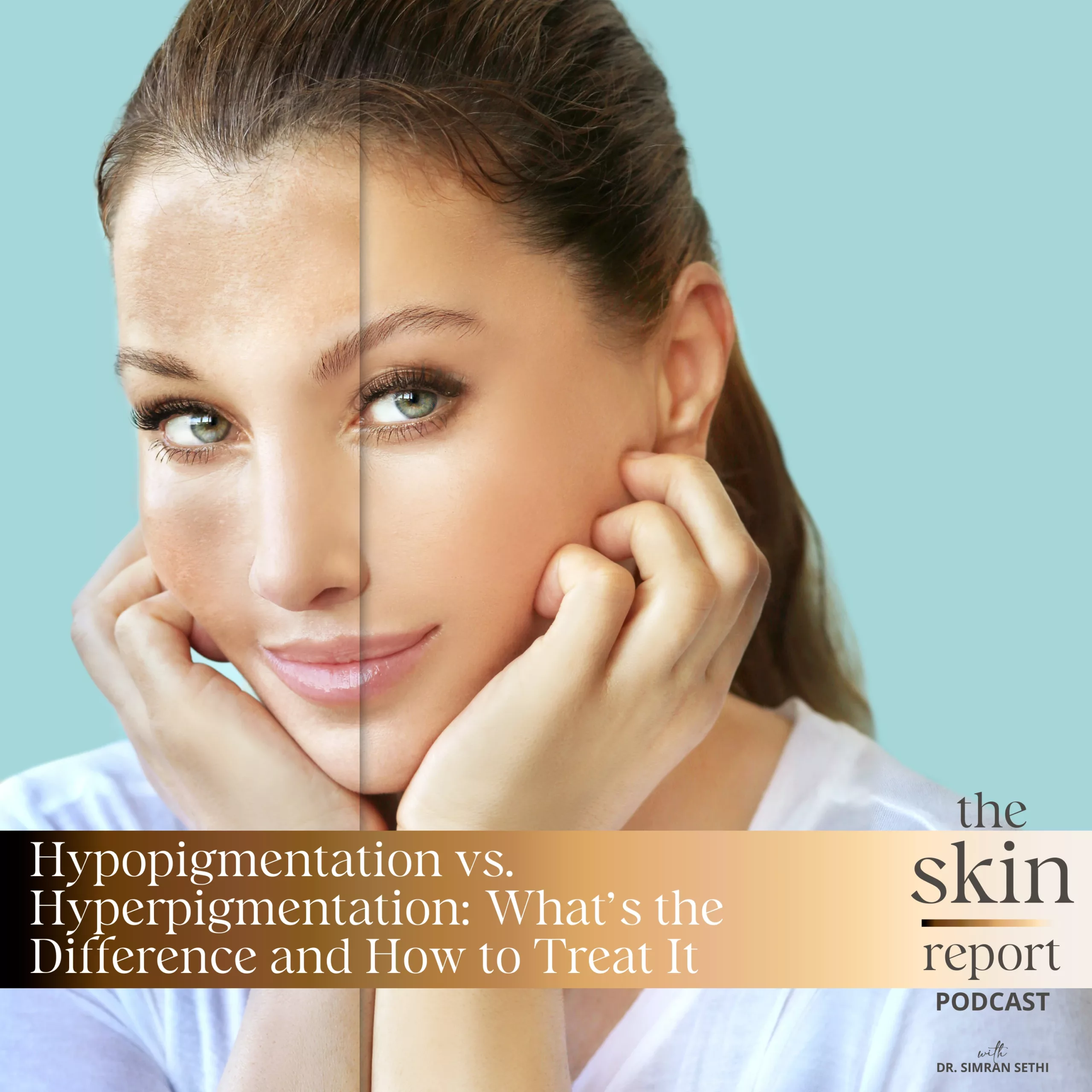Microneedling with radiofrequency is a very popular procedure. In fact, in aesthetics, it’s one of the highly or most Googled terms, and that’s for a good reason. Microneedling with radiofrequency applies to a wide variety of skin conditions and ages, but there are many different devices that deliver this technology. We are going to talk about the difference between microneedling with radiofrequency, with a device called Potenza versus its competitor, Morpheus 8. Welcome to The Skin Report and let’s get started. I use Potenza in my practices, and that’s because I primarily treat skin of color. But Morpheus also has some advantages over Potenza in lighter skin tones. And we are going to cover all of those in today’s episode.
The biggest difference between Potenza and Morpheus 8 is their mode of operation. Potenza can operate in two modes, a bipolar mode and a monopolar mode. Morpheus 8 and all the other microneedling with radiofrequency devices in the market in the US, can only operate in a bipolar mode. Why is this important? A bipolar mode involves having transfer of radiofrequency heat between all the tiny needles that are inserted into the skin during the procedure. This transfer of heat is very intense, which is a good thing because it will promote destruction of skin and collagen so that you can have more collagen synthesis.
Now, when doing a microneedling radiofrequency treatment, the needles do go very deep into the dermis, and both Potenza and Morpheus 8 can go into the dermis very, very deep. The only problem is that even at a very high depth, the energy exchange that happens in a bipolar mode can be enough to cause hyperpigmentation. Or if somebody has very thin skin and has a thin epidermal layer, even if you’re going very deep, you may still get enough heat into the epidermis and cause that hyperpigmentation. So, if you have a darker skin tone, you are going to be much better served with a Potenza, not because it’ll make the treatment lighter, but what will happen is in a monopolar mode, the needles will go into your dermis and fire radiofrequency heat or a current. And that current will travel to a grounding pad that is attached to the patient’s back. And that grounding pad is going to take that current and bounce it back to the needles.
This heat transfer is safely done within the dermis, not the epidermis. And that’s why you can safely get a microneedling radiofrequency treatment that is deep, effective, but will not cause hyperpigmentation. The other big difference between Potenza and Morpheus 8 is comfort level. Comfort level is very important during a microneedling radiofrequency treatment because you do need to do it in a series. And even when you’re done with a series that is spaced one month apart each, you probably need to maintain at least every few months to six months to really build on those results. If the treatment is horribly uncomfortable, you are likely not going to be able to complete it, or maybe you will not get the full efficacy of the treatment because the provider may have to reduce the depth at which they’re delivering the needles.
Potenza generally is delivered with one hour of numbing. In my practice, we use a compounded numbing cream, which includes benzocaine, lidocaine, and tetracaine. We numb our patient for a full hour before the treatment. And all of them report a comfort level anywhere from four to six on a scale of 10. Morpheus, on the other hand, is generally a lot more uncomfortable, and that’s primarily because a lot of that heat exchange is happening in the surface of the skin, the epidermis. And that is a very sensitive layer of our skin. So, with all that heat transfer going on, no matter how long you’ve numbed for, you are going to feel that treatment a lot more than you would compared to a Potenza.
I do have patients who’ve had both a Potenza and a Morpheus 8 treatment, and they always, always state that the Potenza was substantially more comfortable. I’m not saying that comfort is the only thing you should pay attention to when picking the right treatment. Safety is definitely more important. But if something is horribly uncomfortable, you are likely not going to be able to complete the treatment or not do an entire series when you really need to. The next big difference between the two treatments is downtime. After a Potenza treatment, your skin will be pink. But interestingly, this pinkness really, really calms down within 30 minutes to an hour. This level of downtime is minimal and substantially lower than what happens with a Morpheus 8.
After a Morpheus 8 treatment, most people experience redness for a good few days to a week. They also notice little track marks, which are not dangerous or not permanent, but they’re just areas where the skin has been treated. And they tend to be red and bumpy for, again, up to a few days to a week. With the Potenza treatment, I usually find that about a few days after the treatment, you are going to notice that your skin looks a little bit dull. It doesn’t look hyperpigmented, but a little dull and maybe a little bluish or hyperpigmented under the eyes. It’s very, very slight. It’s just really something you may notice. But this is all because of little micro scabs that are forming in areas where the needles have gone in. And within a span of a few days to a week, you’ll notice that all of that will slowly slough off and your skin will look very clear.
Potenza and Morpheus 8 are great microneedling with radio frequency devices. They both have their advantages, but there are some unique differences. And when you’re considering skin tone, downtime, and comfort, they are actually quite different. If you have a darker skin tone, I would highly recommend considering a Potenza treatment, because you can get a very effective microneedling RF treatment, but you are not going to run into issues with any kind of hyperpigmentation.
If you have any questions about the differences between these two devices or any other microneedling radio frequency devices on the market, please ask in the comments below. Otherwise, if you haven’t already done so, subscribe, turn on your notifications so that you always know when we release new content.

